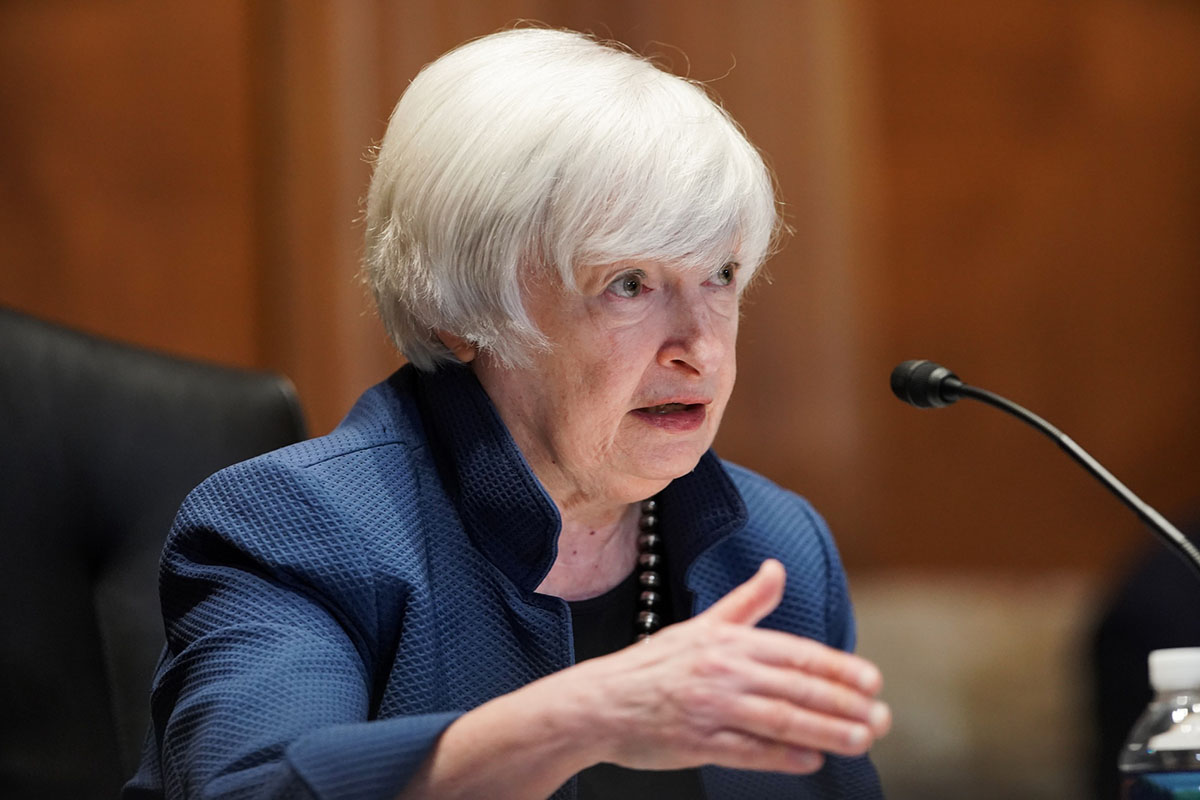Home>Finance>What Causes Variation In Debt Market Liquidity Over Time?


Finance
What Causes Variation In Debt Market Liquidity Over Time?
Published: February 23, 2024
Explore the factors influencing liquidity in the debt market over time. Gain insights into the dynamics of finance and its impact on market fluctuations.
(Many of the links in this article redirect to a specific reviewed product. Your purchase of these products through affiliate links helps to generate commission for LiveWell, at no extra cost. Learn more)
Table of Contents
Introduction
Debt market liquidity is a critical aspect of the financial landscape, influencing the efficiency and stability of the market. Understanding the dynamics of debt market liquidity is essential for market participants, policymakers, and researchers. This article delves into the multifaceted nature of debt market liquidity, exploring its definition, influential factors, and empirical studies that shed light on its behavior over time.
Debt market liquidity refers to the ease with which debt securities can be bought or sold in the market without significantly impacting their prices. In essence, it reflects the ability of market participants to execute large transactions without causing substantial price movements. This liquidity is vital for the proper functioning of the debt market, as it facilitates the allocation of capital, risk management, and price discovery.
The variation in debt market liquidity over time has garnered significant attention due to its implications for market stability and resilience. Understanding the factors driving this variation is crucial for anticipating market dynamics and formulating effective risk management strategies. By examining the intricate interplay of economic, financial, and regulatory factors, we can gain valuable insights into the dynamics of debt market liquidity.
In the following sections, we will delve into the definition of debt market liquidity, explore the diverse factors that influence its dynamics, and review empirical studies that offer valuable perspectives on the temporal variation of liquidity in debt markets. Through this exploration, we aim to enhance our comprehension of the complexities inherent in debt market liquidity and its pivotal role in the broader financial landscape.
Definition of Debt Market Liquidity
Debt market liquidity encompasses the ease with which debt securities can be bought or sold in the market at stable prices. This liquidity is characterized by the depth of the market, the narrowness of bid-ask spreads, and the immediacy of trade execution. In essence, it reflects the degree to which market participants can swiftly and efficiently transact in the debt market without significantly impacting the prevailing market prices.
Market depth, a key component of debt market liquidity, denotes the ability to execute substantial transactions without causing substantial price movements. A liquid debt market exhibits ample depth, enabling investors to enter or exit positions with minimal impact on prices. Narrow bid-ask spreads, representing the difference between the prices at which market participants can buy and sell securities, are indicative of robust liquidity. Tight spreads indicate that transactions can be executed with minimal cost, promoting market efficiency and accessibility.
Moreover, the immediacy of trade execution is a crucial facet of debt market liquidity. It pertains to the swiftness with which transactions can be completed without incurring significant price changes. In a liquid debt market, investors can swiftly execute trades, enhancing the market’s efficiency and reducing the risk of price volatility.
Debt market liquidity is essential for fostering market efficiency, as it facilitates the allocation of capital and supports the smooth functioning of financial markets. It enables investors to adjust their portfolios, manage risk, and capitalize on investment opportunities with relative ease. Additionally, liquidity in the debt market is integral for price discovery, as it allows market participants to obtain fair and transparent prices for securities.
Understanding the nuances of debt market liquidity is paramount for market participants, as it influences investment decisions, risk management strategies, and overall market stability. By comprehending the factors that contribute to liquidity and monitoring its dynamics, market participants can navigate the debt market more effectively, contributing to a more robust and resilient financial ecosystem.
Factors Affecting Debt Market Liquidity
Debt market liquidity is influenced by a myriad of factors that collectively shape the dynamics of the market. These factors encompass economic conditions, market structure, regulatory environment, and investor behavior, contributing to the ebb and flow of liquidity over time.
1. Economic Conditions: Macroeconomic variables such as interest rates, inflation, and economic growth exert a profound impact on debt market liquidity. Changes in these factors can alter investor sentiment, risk preferences, and the demand for debt securities, consequently influencing market liquidity. During periods of economic uncertainty, liquidity in the debt market may diminish as investors adopt a more cautious stance, leading to reduced trading activity and wider bid-ask spreads.
2. Market Structure: The organizational structure of the debt market, including the presence of market makers, electronic trading platforms, and trading protocols, significantly influences liquidity. Market makers play a pivotal role in providing continuous liquidity by quoting bid and ask prices, thereby facilitating trade execution. Electronic trading platforms enhance market accessibility and transparency, contributing to liquidity by fostering efficient price discovery and trade execution.
3. Regulatory Environment: Regulatory policies and interventions can impact debt market liquidity. For instance, capital requirements, trading regulations, and disclosure mandates can shape market participants’ behavior and trading activities, influencing liquidity dynamics. Regulatory initiatives aimed at enhancing transparency and mitigating systemic risk can bolster market confidence and liquidity, contributing to a more resilient market environment.
4. Investor Behavior: The behavior of investors, including their risk appetite, investment horizons, and trading strategies, plays a pivotal role in shaping debt market liquidity. During periods of heightened market volatility, investor sentiment may shift, leading to reduced liquidity as market participants become more risk-averse. Additionally, the prevalence of high-frequency trading and algorithmic strategies can impact liquidity dynamics, influencing the pace and depth of market transactions.
These diverse factors interact in a complex manner, influencing the liquidity of the debt market in varying degrees. Market participants and policymakers closely monitor these factors to gauge the evolving liquidity landscape, enabling them to adapt their strategies and policies in response to changing market conditions.
Empirical Studies on Debt Market Liquidity
Empirical research plays a pivotal role in elucidating the intricate dynamics of debt market liquidity, providing valuable insights into its temporal variation and the underlying factors driving its behavior. By employing rigorous methodologies and analyzing extensive datasets, researchers have contributed to a nuanced understanding of liquidity dynamics in the debt market.
Empirical studies have examined the impact of various factors on debt market liquidity, shedding light on the interplay of economic, financial, and regulatory variables. Research has highlighted the influence of interest rate movements on liquidity, demonstrating how shifts in monetary policy can reverberate through the debt market, impacting trading volumes and bid-ask spreads. Moreover, studies have delved into the implications of credit risk and credit rating changes on liquidity, elucidating how credit market dynamics can influence the ease of trading in debt securities.
Furthermore, empirical research has explored the role of market microstructure in shaping debt market liquidity. By analyzing trading protocols, market transparency, and the presence of market makers, studies have delineated the impact of market design on liquidity provision and trade execution. This research has underscored the importance of market infrastructure in fostering robust liquidity and enhancing market efficiency.
Moreover, empirical studies have investigated the effects of regulatory interventions on debt market liquidity. By evaluating the impact of regulatory changes, such as the implementation of disclosure requirements and trading rules, researchers have assessed the efficacy of regulatory measures in bolstering liquidity and mitigating market frictions. This body of research has informed policymakers and market participants about the potential implications of regulatory initiatives on liquidity dynamics.
Empirical studies have also delved into the behavior of market participants and its impact on debt market liquidity. By examining trading patterns, investor sentiment, and the prevalence of algorithmic trading, researchers have elucidated the influence of investor behavior on liquidity provision and market resilience. This research has provided valuable insights into the evolving nature of market participation and its implications for liquidity dynamics.
Overall, empirical studies have enriched our understanding of debt market liquidity by disentangling its multifaceted drivers and dynamics. By leveraging empirical evidence, researchers have contributed to a more comprehensive comprehension of liquidity variation over time, empowering market participants and policymakers to make informed decisions and formulate effective strategies in navigating the complexities of the debt market.
Conclusion
Debt market liquidity is a cornerstone of the financial system, influencing market efficiency, price discovery, and risk management. The variation in debt market liquidity over time reflects the interplay of diverse factors, encompassing economic conditions, market structure, regulatory environment, and investor behavior. Understanding the intricate dynamics of debt market liquidity is essential for market participants, policymakers, and researchers, as it enables them to navigate the market landscape with acumen and adapt to evolving conditions.
By comprehending the factors that affect debt market liquidity, market participants can anticipate liquidity dynamics and adjust their strategies accordingly. Economic conditions, including interest rate movements and credit market dynamics, exert a profound impact on liquidity, influencing trading volumes and bid-ask spreads. The organizational structure of the market, the presence of market makers, and the influence of electronic trading platforms play a pivotal role in shaping liquidity provision and trade execution. Regulatory policies and interventions can shape market participants’ behavior and influence liquidity dynamics, contributing to market resilience and stability. Additionally, the behavior of investors, including their risk preferences and trading strategies, influences the pace and depth of market transactions, impacting liquidity provision.
Empirical studies have offered valuable insights into the temporal variation of debt market liquidity, elucidating the influence of economic, financial, and regulatory factors. By leveraging rigorous methodologies and extensive datasets, researchers have contributed to a nuanced understanding of liquidity dynamics, informing market participants and policymakers about the multifaceted drivers of liquidity variation.
As the debt market continues to evolve in response to changing economic and regulatory landscapes, a comprehensive understanding of liquidity dynamics is indispensable. Market participants and policymakers must remain attuned to the evolving factors that shape debt market liquidity, enabling them to adapt their strategies and policies to foster a more resilient and efficient market environment. By leveraging empirical evidence and monitoring the interplay of influential factors, market participants can navigate the debt market with agility, contributing to a more robust and dynamic financial ecosystem.














